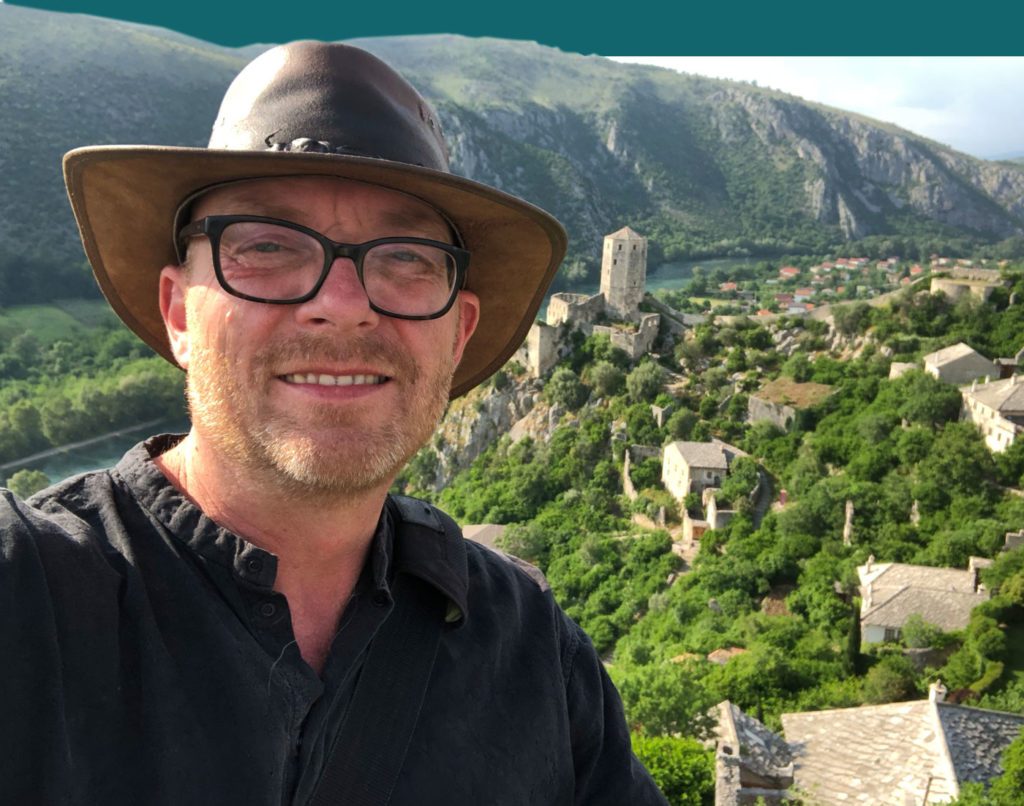DOBRO DOŠLI U MOSTAR
Again, I go by bus to my next Balkan destination. This time north from Kotor in Montenegro to Mostar in the southern part of Bosnia and Herzegovina.
It was one of the other guests at the hostel in Kosovo – an English guy called Edward, that recommended Mostar and Rooms Deny to me.
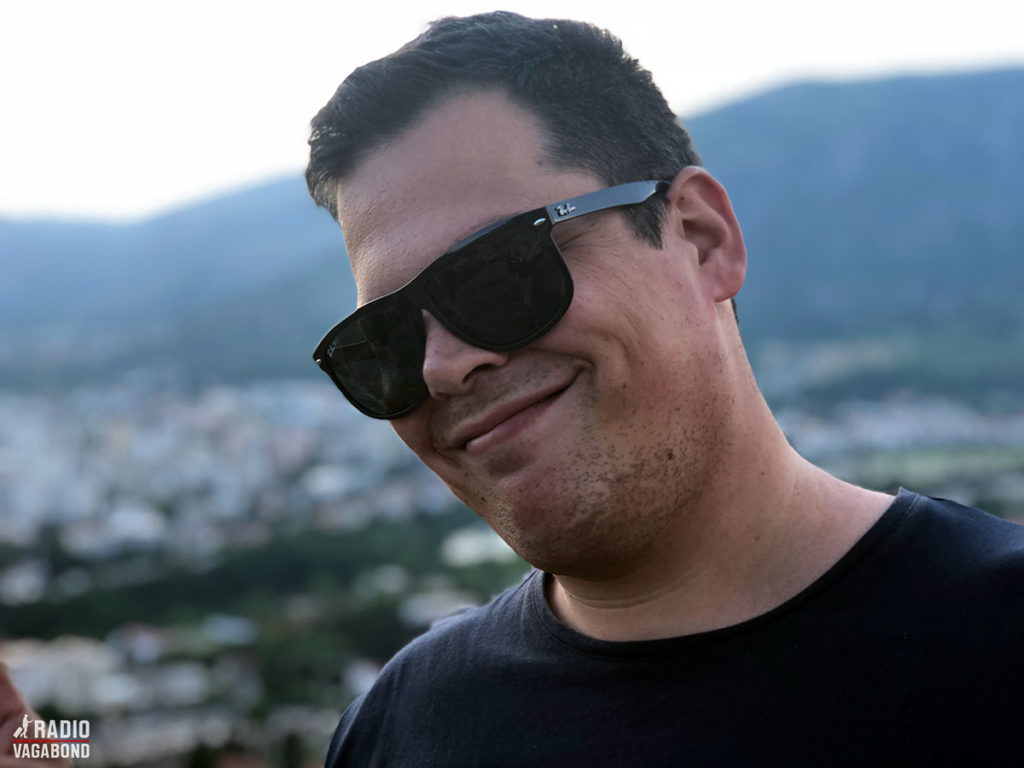
There’s a river that runs through Mostar from the north to the south and cuts the city in two halves. Deny, the owner of ‘Rooms Deny’, the hostel I’d booked, came to pick me up at the bus station, and even though both the bus station and the hostel are on the eastern side, we’re taking a bit of a detour into the western side because cars are not allowed in the old town. That gives Deny time to do his ‘tour guide introduction’ to Mostar.
DENY IS THE PERFECT TOUR GUIDE
My host Deny Kadric is a very open young man and has an impressive knowledge about his country and especially Mostar.
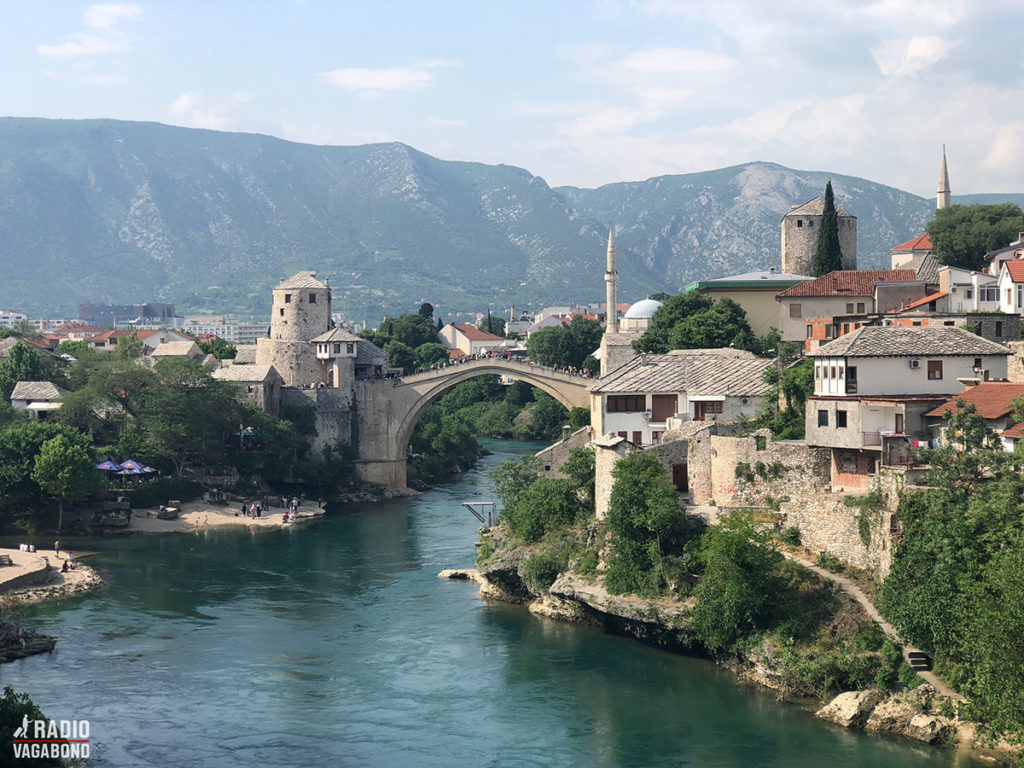
As we see the iconic Stari Most Bridge (the Old Bridge) for the first time, Deny asks me what I know about Mostar other than the bridge. But no, I didn’t even know about the bridge, and since that’s the most iconic thing about Mostar, I didn’t know much. Or anything – other than what Edward told me. That it’s a quaint little city with a lot of history.
We’ll get back to this bridge and why it’s so important later on in this episode.
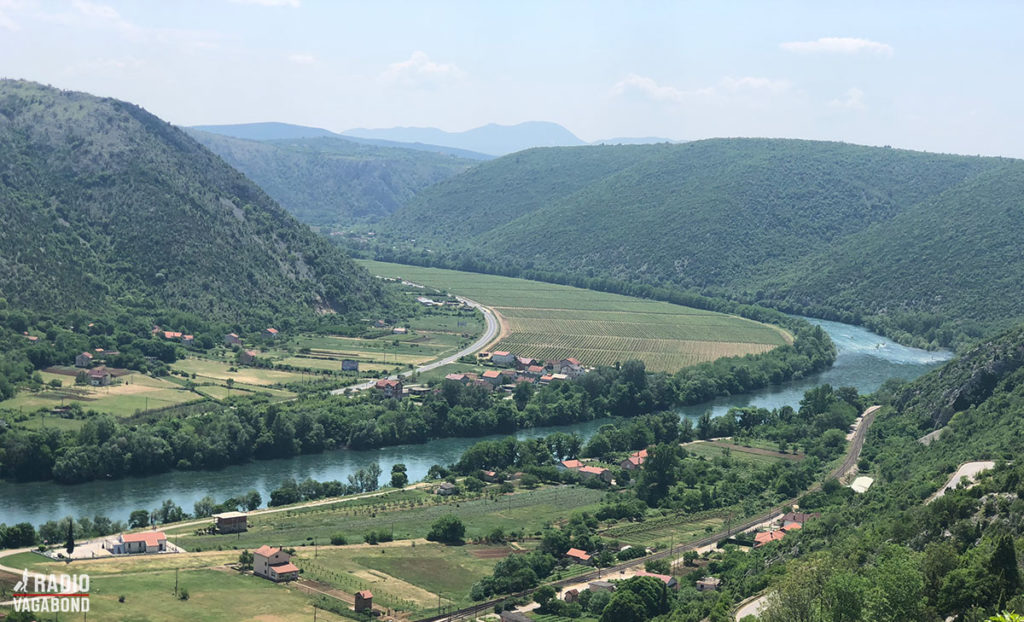
SMALL COUNTRY WITH TWO NAMES
Bosnia and Herzegovina is home to 3.8 million people – and it’s important that you say both names. Basically, it’s too regions with Bosnia in the north and Herzegovina in the south.
In fact, I’m not even in Bosnia. Mostar is in Herzegovina and has a population of 113,000 and is Bosnia and Herzegovina’s most divided city. Nowhere is this more evident than in Mostar, where Bosnian Croatians live on the western side of the Neretva River, and Bosniaks on the eastern side.
Even to this day, more than 25 years after the war, this is still the case. They rarely go to the other side and interact with the people on the other side. Both sides have their own national theatre, post office, and other separate public services.
Deny tells me that he does have friends on both sides, but he’s more the exception to the rule.
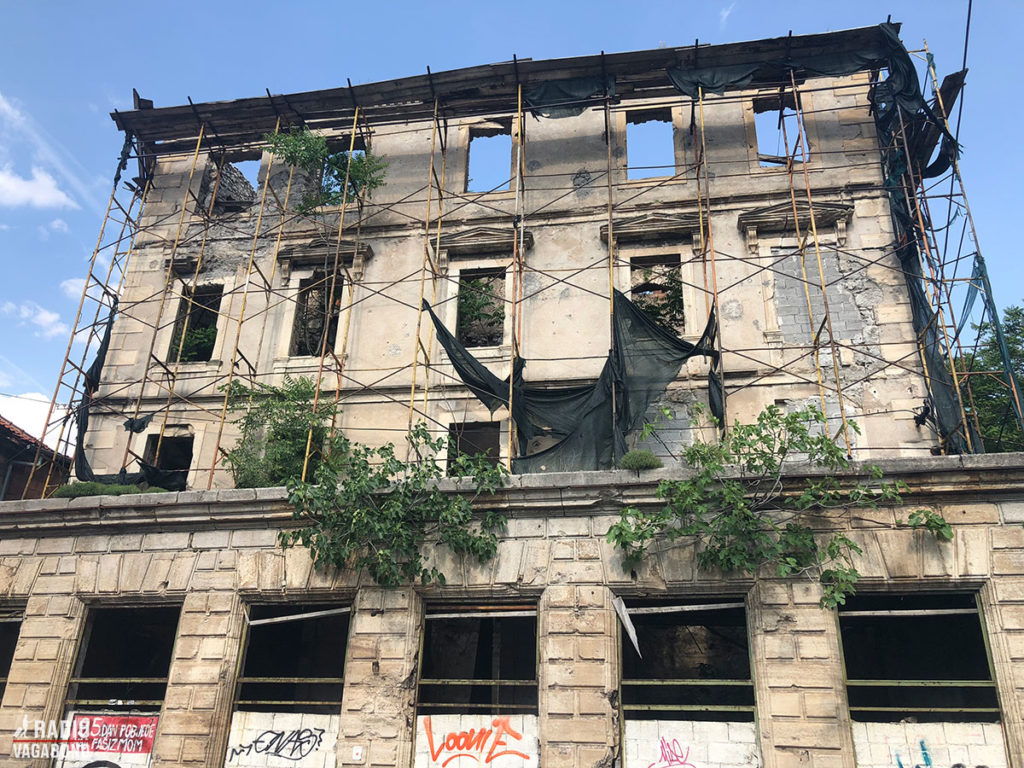
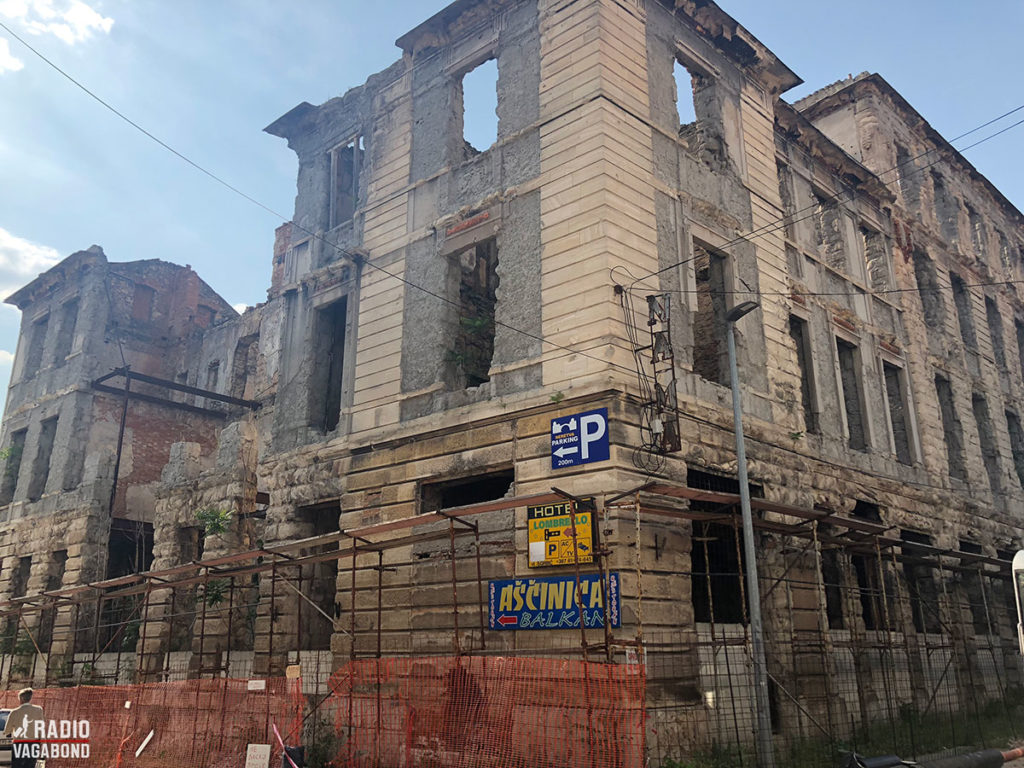
THE SCARS OF THE WAR IN MOSTAR
Deny recommended that I took 45 minutes to see a documentary called Unfinished Business in Mostar before I walked out to explore. It’s a BBC documentary presented by Jeremy Bowen, filmed in 1993 in and around Mostar at the height of the Bosniak-Croat conflict during the Bosnian War.
And I did, and already one minute in we see some guys come running with a wheelbarrow to get an old man that had just been shot. They wanted to rush him to the hospital. He’d just stepped out of his house to get some water when it happened. At the hospital, a doctor gives him CPR in an attempt to revive him. But there was nothing he could do – he was dead on arrival and his old wife breaks down.
These first few minutes of the documentary sets the tone for the rest of it. It’s heartbreaking but I suggest you see it. We should all see it and learn from it.
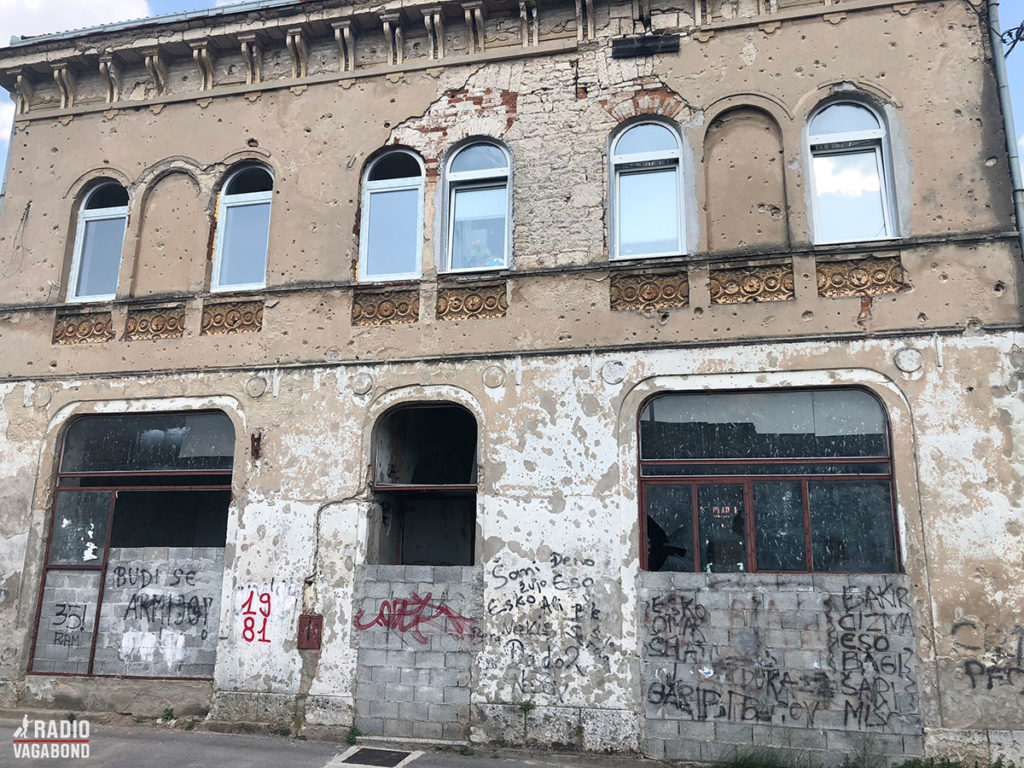
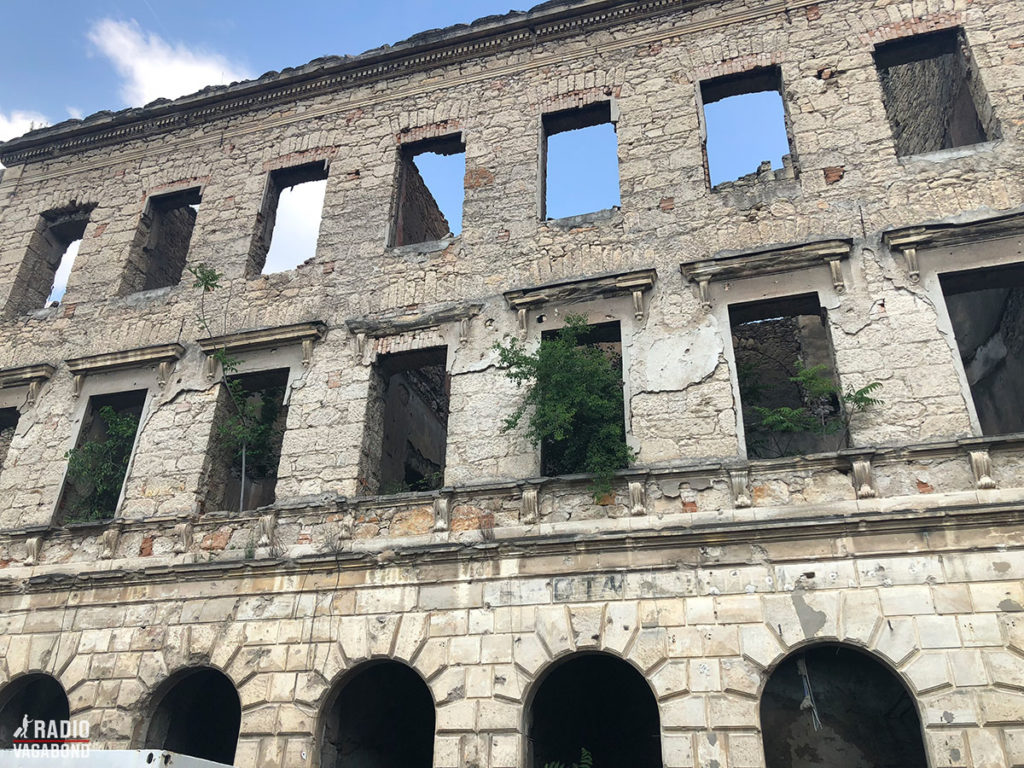
It’s surreal to walk around in the streets of Mostar after seeing them as a war zone. You can still see the scars of the war. Many of the buildings are still in ruins and you see bullet-holes on the walls everywhere.
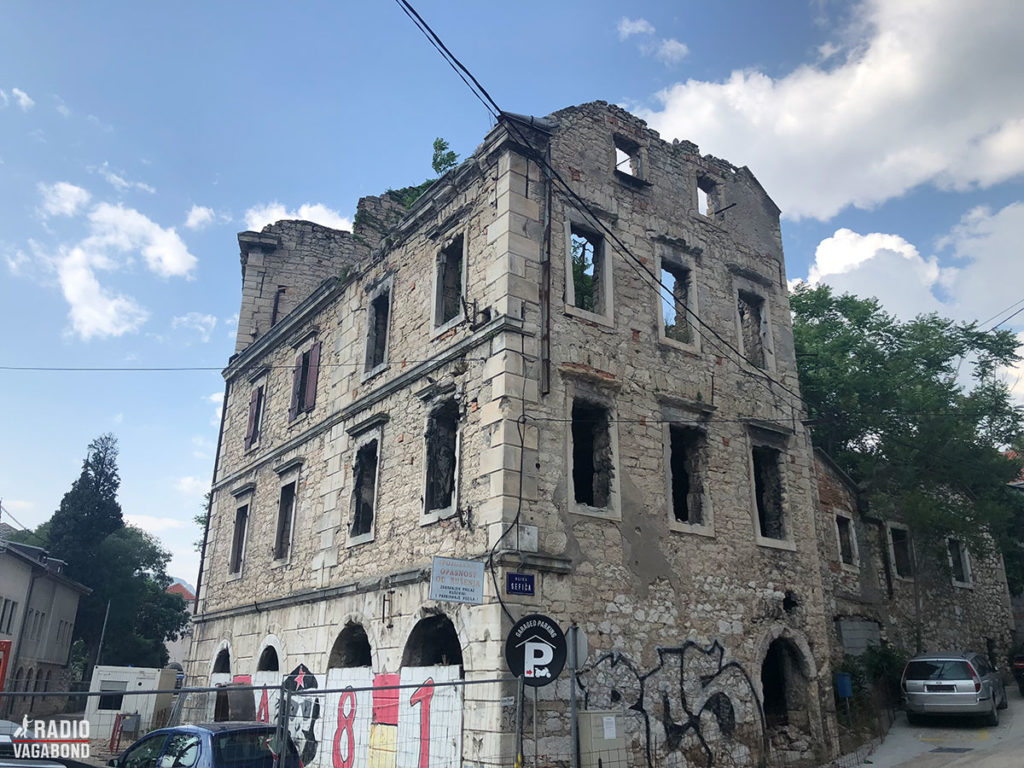
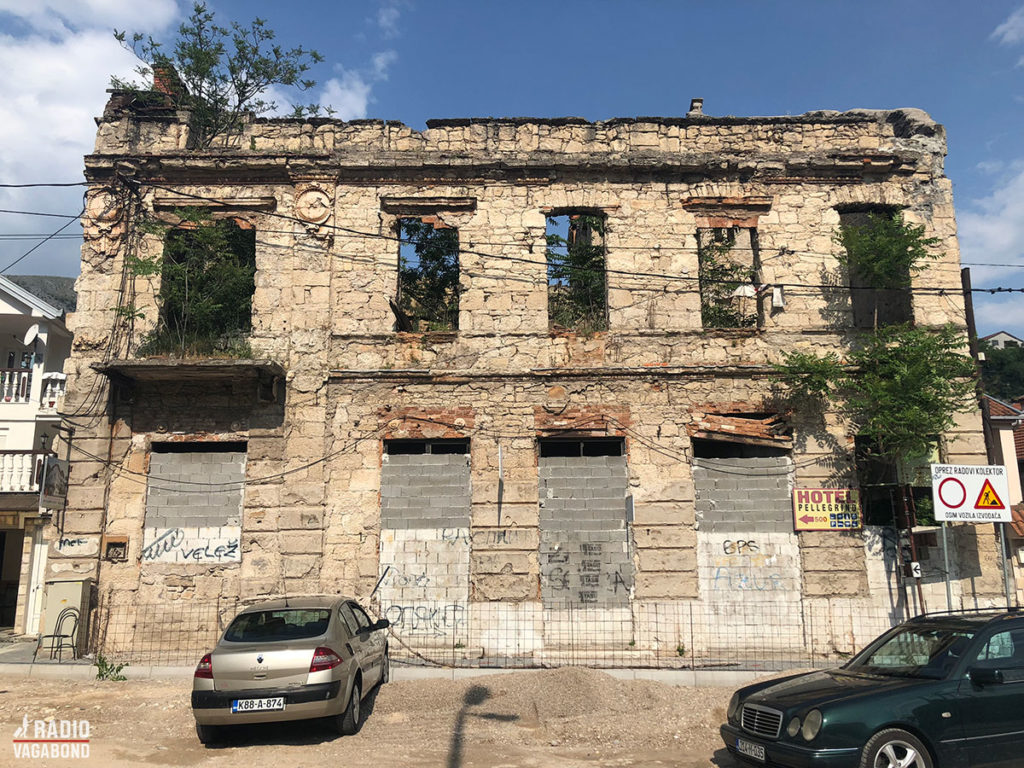
STARI MOST BRIDGE WAS DESTROYED
The Siege of Mostar was fought during the Bosnian War first in 1992 and then again later in 93-94. As a result of the first siege around 90,000 residents of Mostar fled … and many religious buildings, cultural institutions, and bridges were damaged or destroyed.
Between June 93 and April 94, the besieged Bosniak-concentrated East Mostar, resulting in the deaths of many civilians, a cut off of humanitarian aid, damage or destruction of ten mosques, and then the blowing up of the historic Stari Most bridge on November 9, 1993.
Croatian general Slobodan Praljak was deemed the main responsible for the destruction of the bridge and sentenced to twenty years. He was the one who declared that “those stones” (meaning the bridge) had no value.
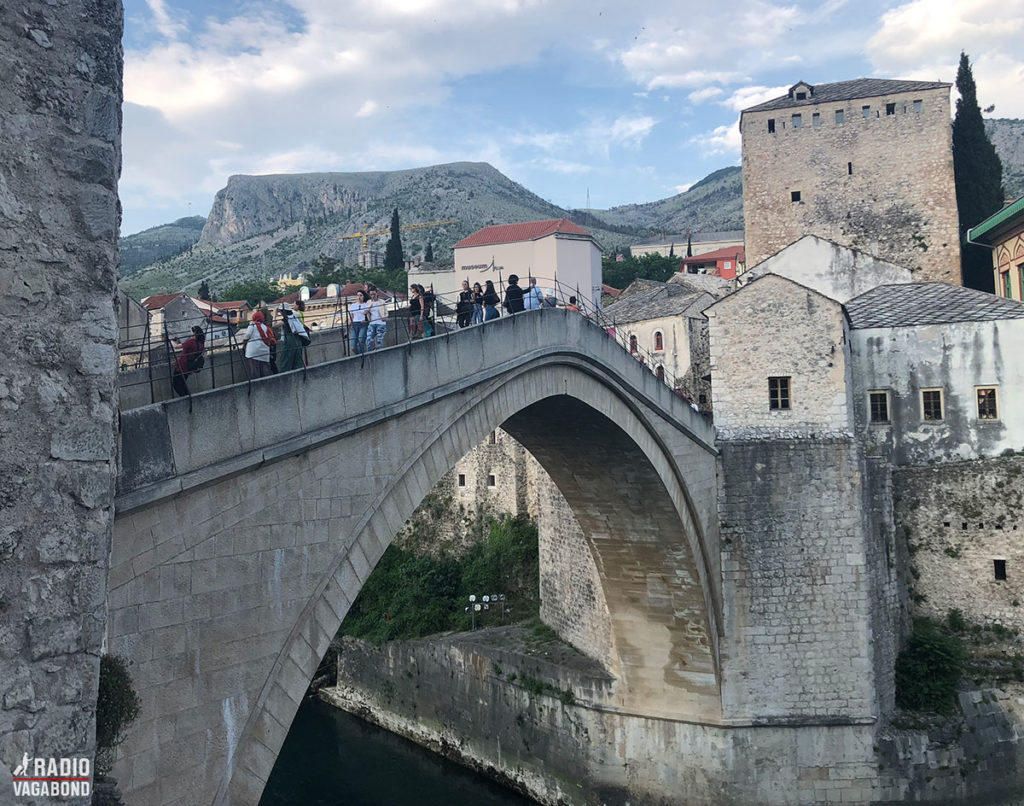
Stari Most Bridge, also known as The Old Bridge and Mostar Bridge, connects the two parts of the city. It was a 16th-century Ottoman bridge and stood for 427 years, until that day in ‘93.
After the war, a project was set in motion to reconstruct it; the rebuilt bridge – that looks like the old one opened on 23 July 2004.
It’s now an iconic tourist attraction. It stands 20 meters over the river and often you can see people jumping of it into the water.
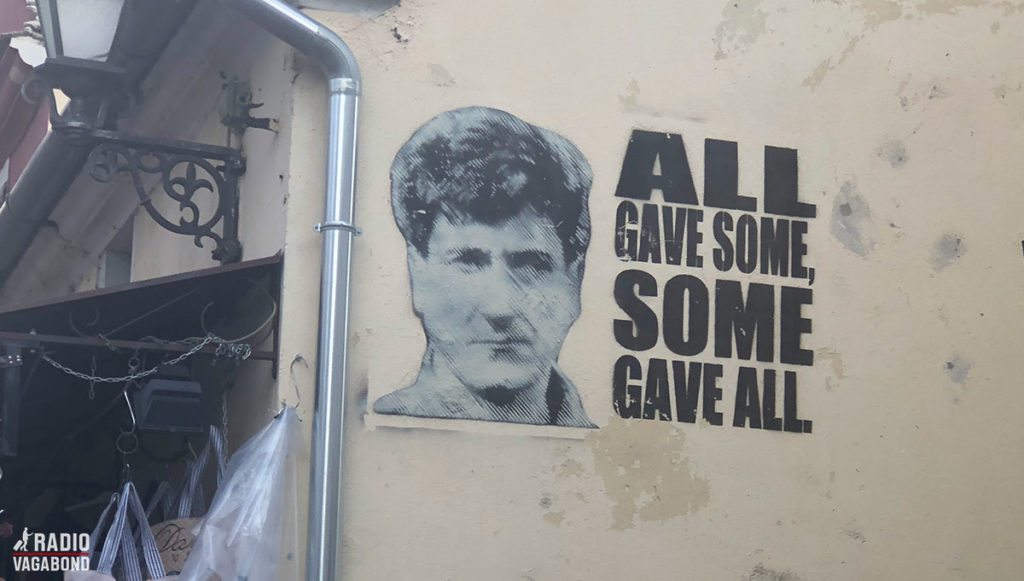
MUSEUM OF WAR AND GENOCIDE VICTIMS
I decide to spend a few hours at the ‘Museum of War and Genocide Victims 1992-1995’. It’s a small but interesting and very moving museum about the events leading up to the breakup of the former Yugoslavia.
The way the history of the war is explained is very moving and extremely touching. What the people of Bosnia and especially Mostar have been through is unimaginable.
The personal stories of those who lived through these times are as always, the most moving.
It’s an important part of the history of Bosnia Herzegovina and Mostar and anyone visiting it must go to the Museum out of respect for the victims and locals who suffered through this.
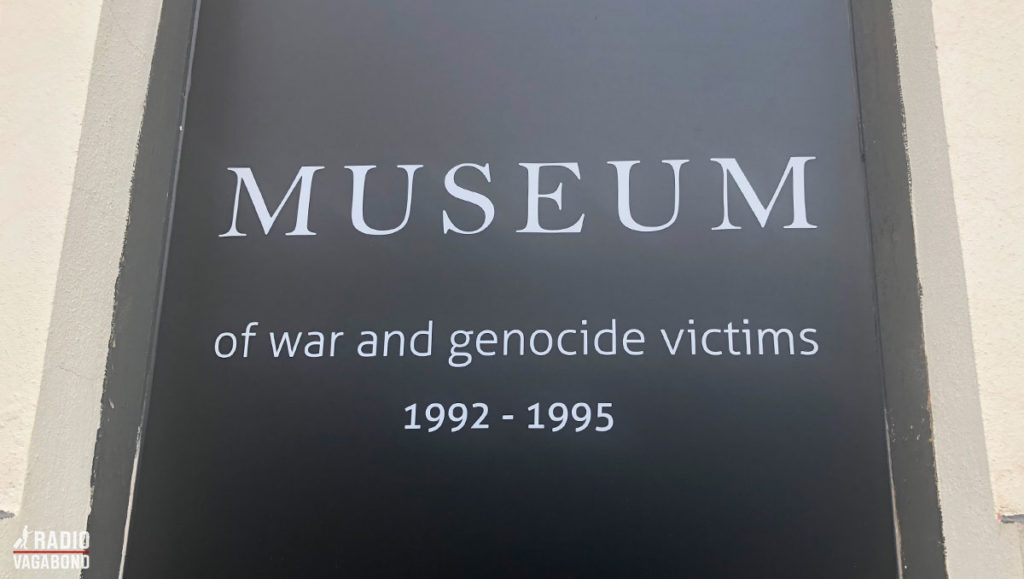
There are some very graphic shocking photos on display. Also, three TVs each showing different stories about the war and the concentration camps. There is quite a bit to read as each display and picture has a story behind it. On the lower floor this is where the more graphic photos are displayed so if your easily upset – or if you’re bringing your kids, I would skip this part.
All in all, it’s horrific to see what happened, but I feel it’s an important visit to get a clearer view of what happened and why it should never happen again.
There’s a part of the museum talking about war crimes – with so many pictures of people doing something against the Hague and Geneva Conventions.
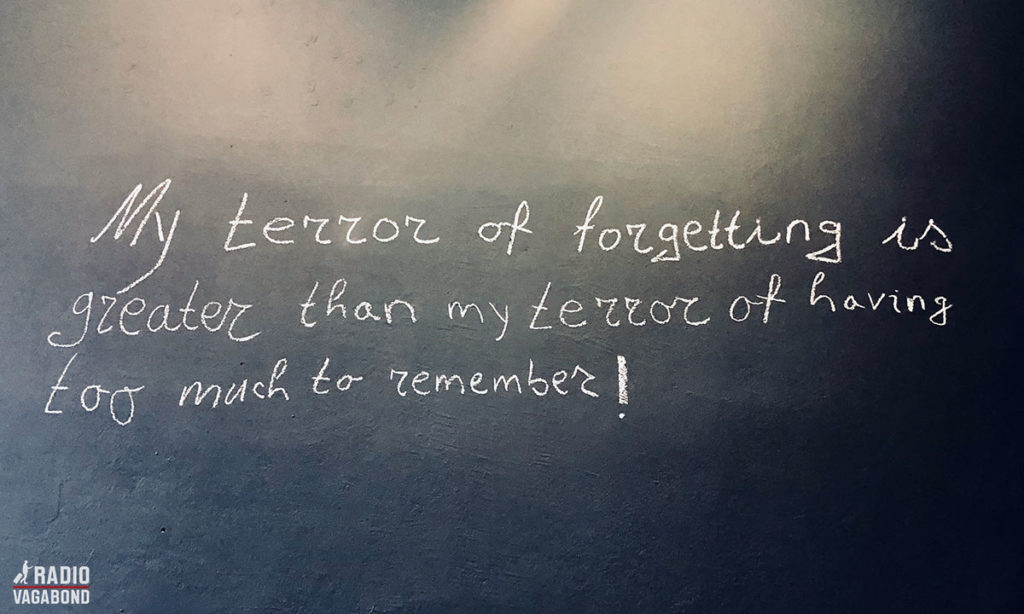
And that’s what bothers me the most. How could this happen – with the second World War in recent memory. Didn’t we learn anything?
As it says on the wall in the museum:
“The terror of forgetting is greater than the terror of having too much to remember”
That’s why I feel it’s important to visit places like this, even though it’s not an upbeat uplifting experience.
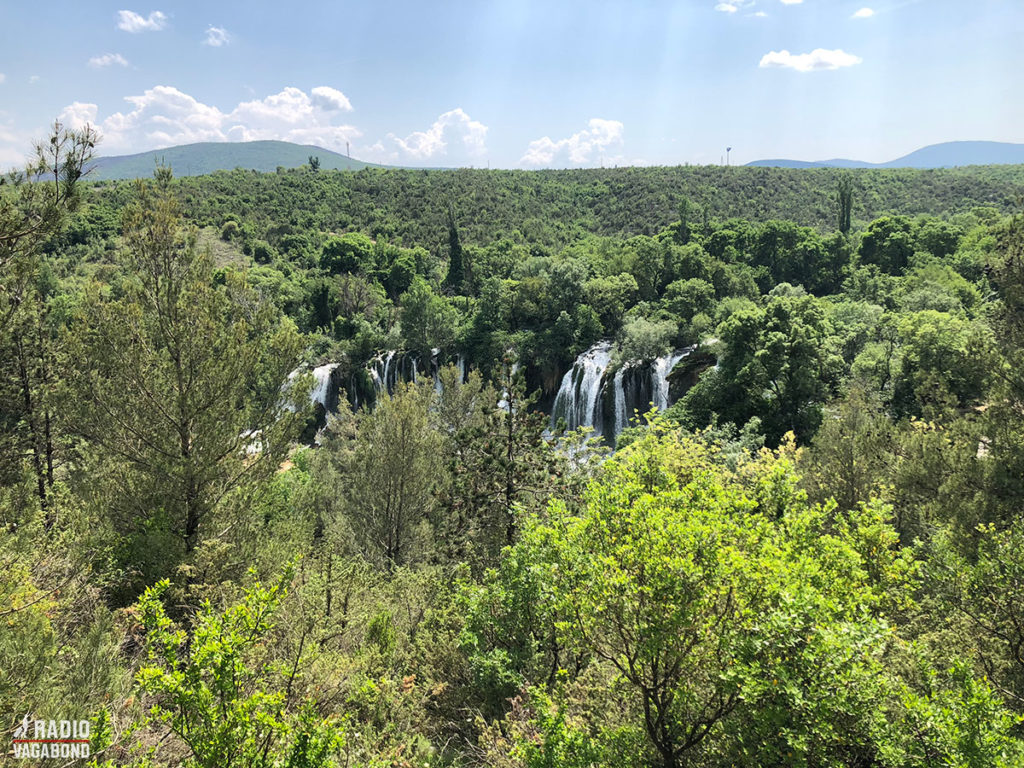
6 FUN FACTS ABOUT BOSNIA HERZEGOVINA
- Bosnia Herzegovina is nicknamed the “Heart-Shaped Land” due to the country’s slight heart shape.
- When you look at a map, you would think that Bosnia Herzegovina is landlocked but if you look very closely you will notice that they have the smallest little panhandle which touches the Adriatic Sea for only about 25 kilometres or 15 miles.
- One of Europe’s last jungles can be found here. Situated on the border of Montenegro, Perućica is one of two remaining jungles forests in Europe. Some of the trees here are 300 years old, and the undisturbed forest vintage dates back 20,000 years.
- Bosnia has three official languages: Bosnian, Croatian, and Serbian. They are pretty similar and they all understand each other. Kinda like Danish Norwegian and Swedish… or American, Irish and Australian… I think.
- The name “Bosnia” comes from an Indo-European word Bosana, which means water. Herzegovina stems from the Serbo-Croatian term borrowed from German, Hercegovina, a land ruled by a Herzog – the German term for a duke.
- They like coffee here… Bosnia Herzegovina has the tenth highest coffee consumption per capita in the world.
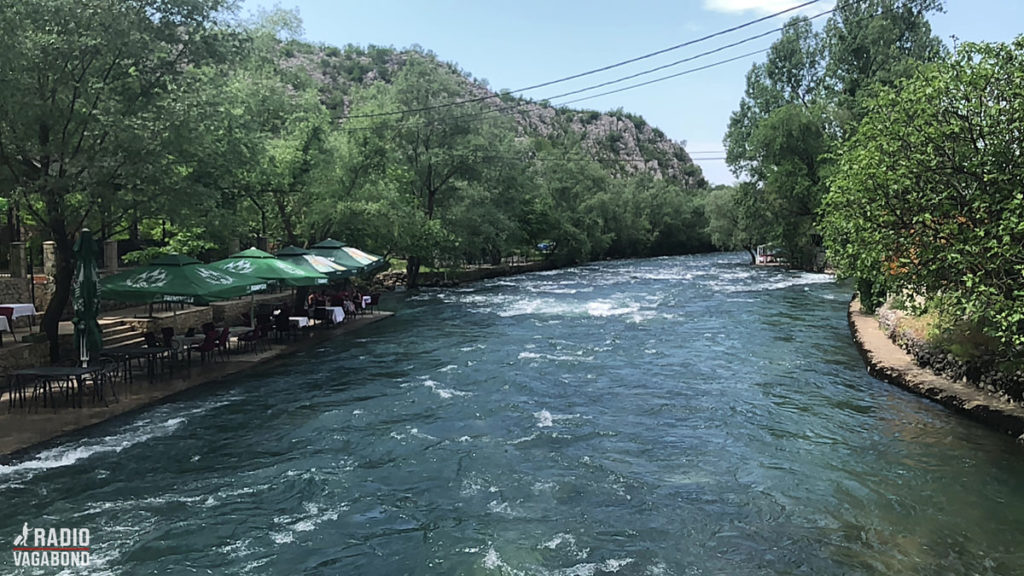
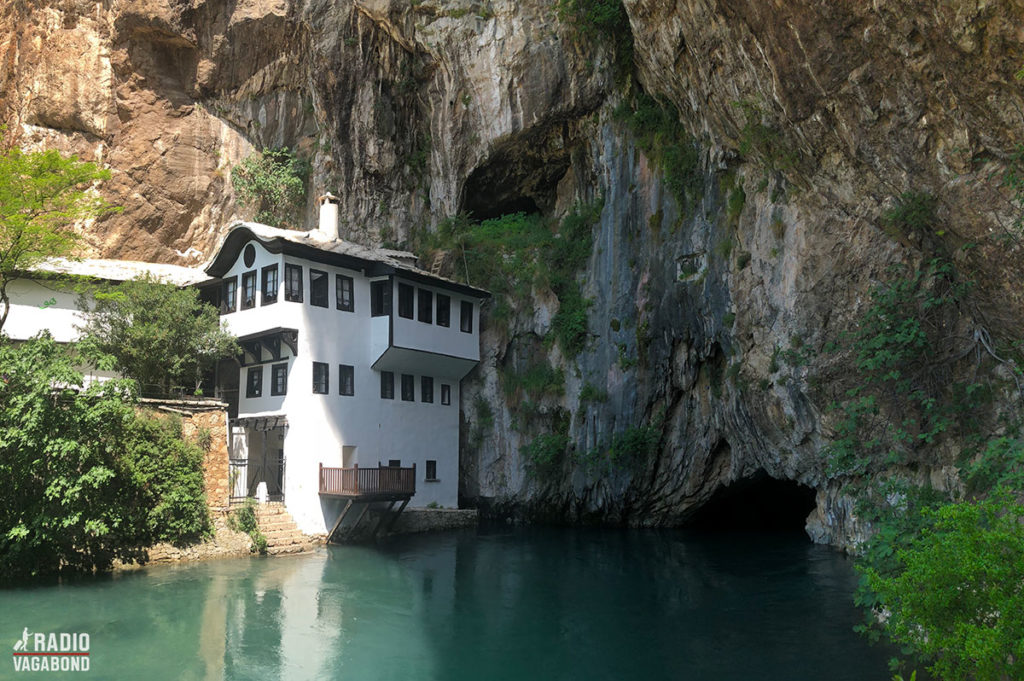
HAVE YOU HEARD?
If you like this episode, I think you might also like my visit to Bahamas – where I was Eating Conch and Scuba Diving
HERZEGOVINA TOUR SOUTH OF MOSTAR
With a group of other guests from the hostel, I go on a day-trip in beautiful Herzegovina with Deny as the tour guide. He takes us about 30 kilometers (19 mi) south of Mostar.
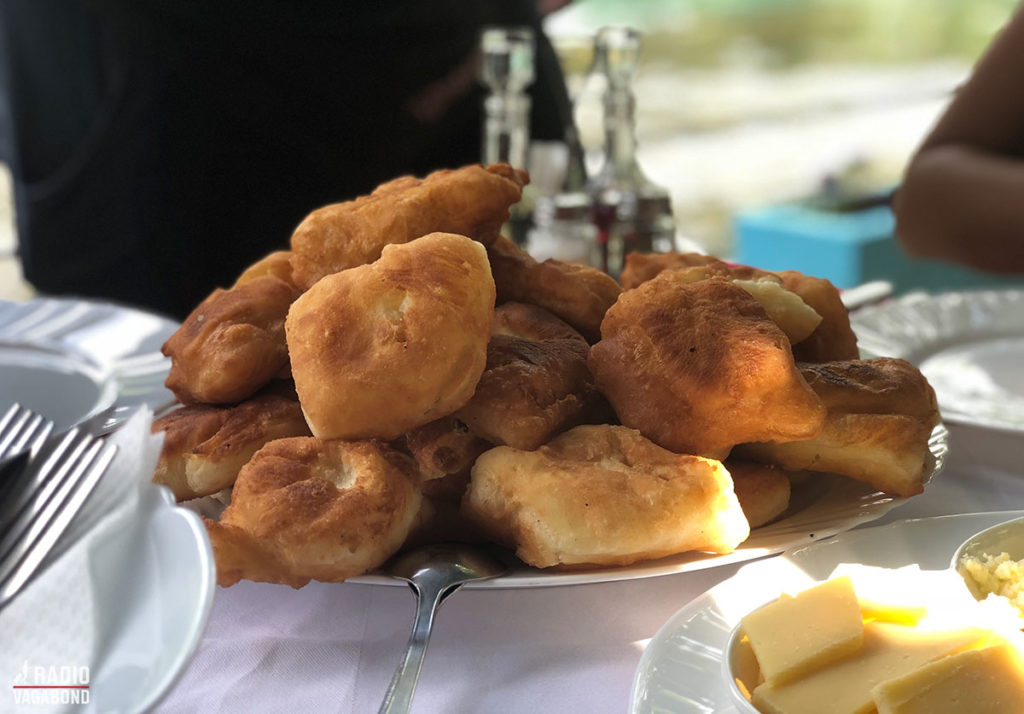
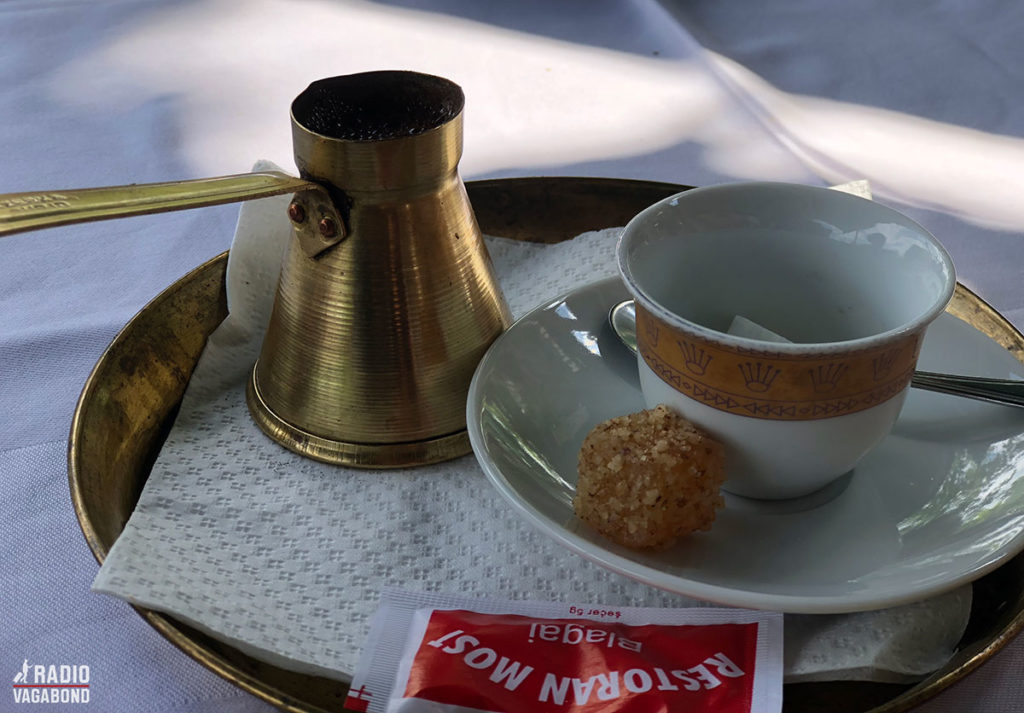
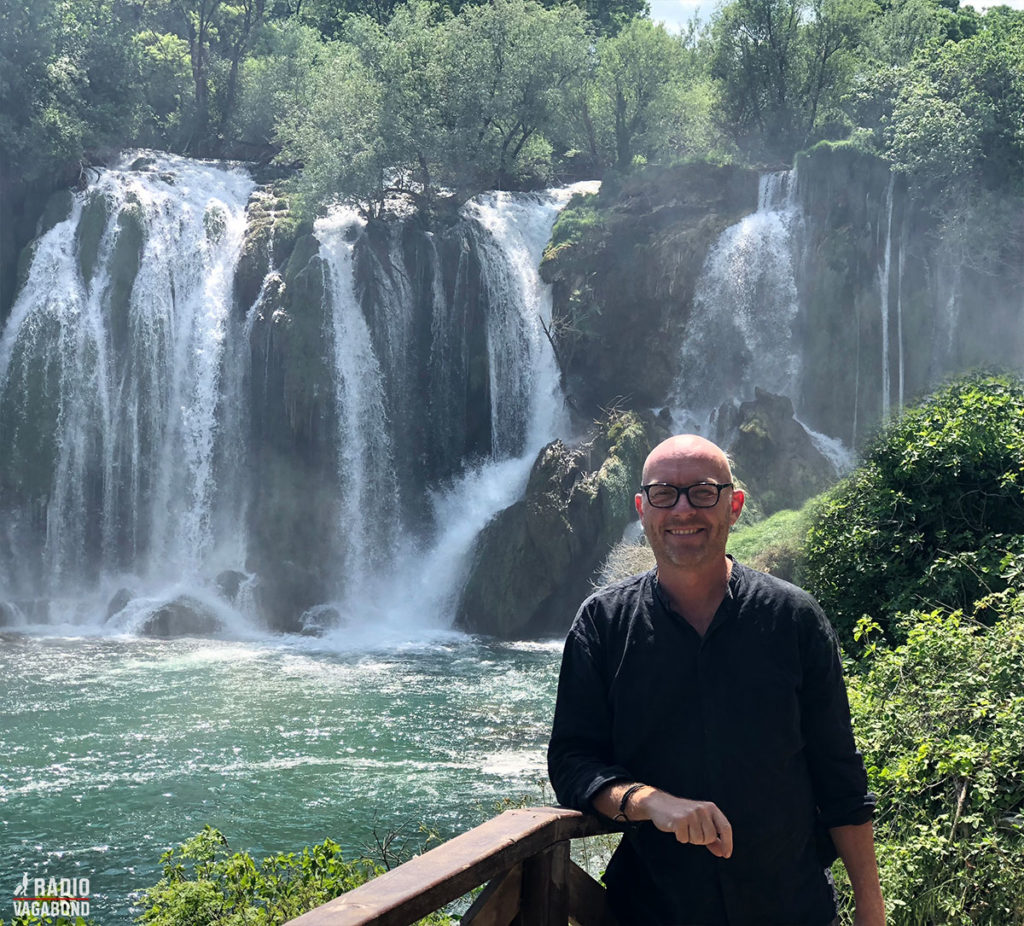
After a local breakfast, we go on a hike in some astonishing landscapes to the waterfalls in Kravica.
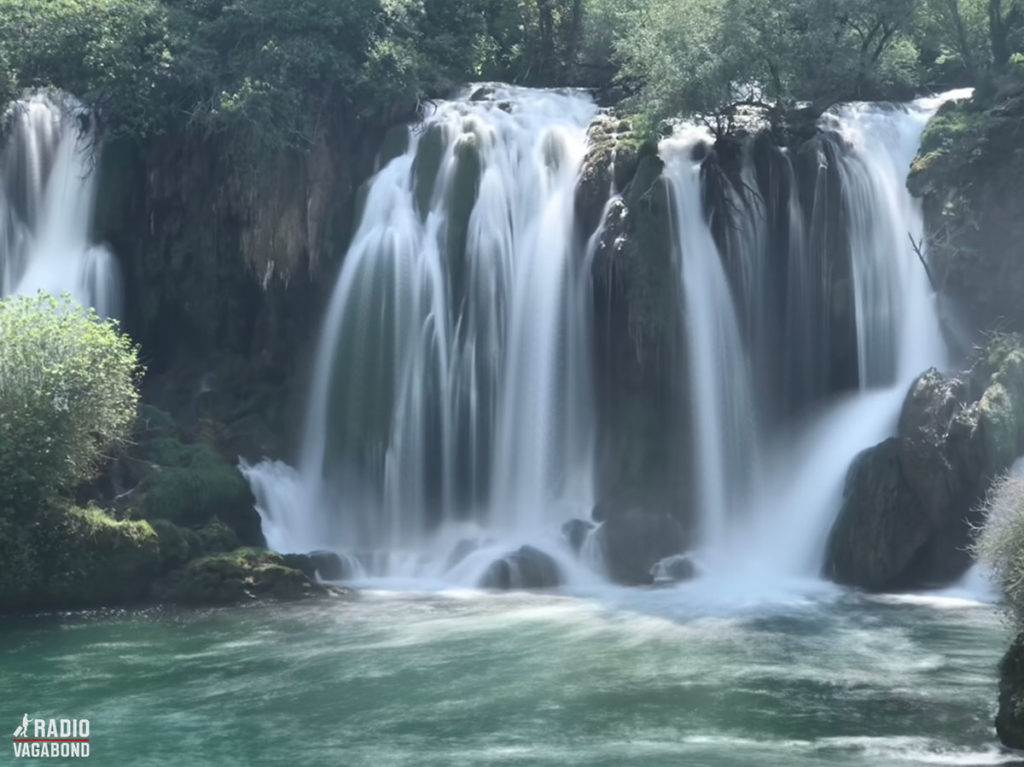
And then to Počitelj – the historic village and an open-air museum with a fortress in the mountains.
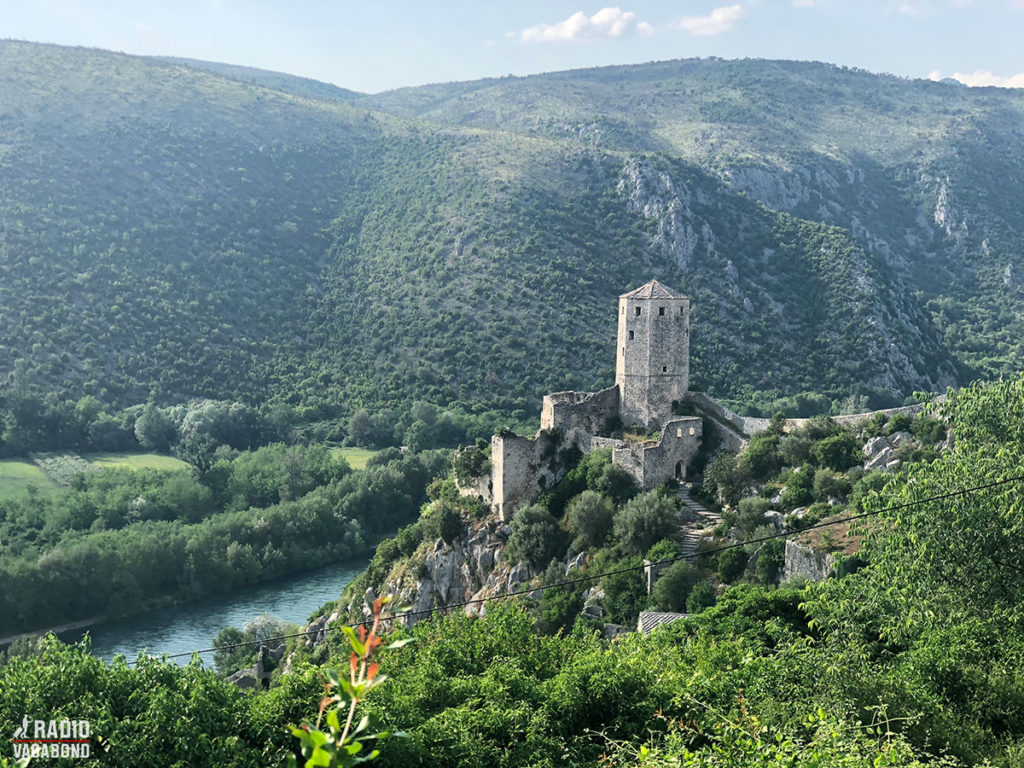
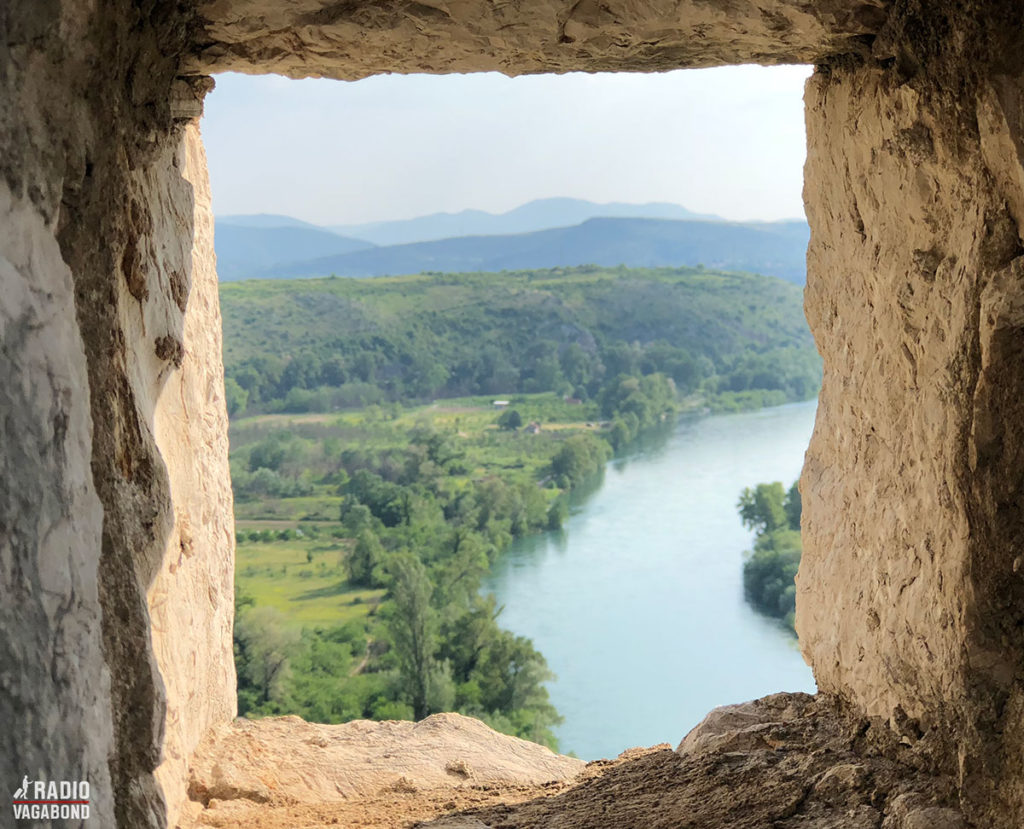
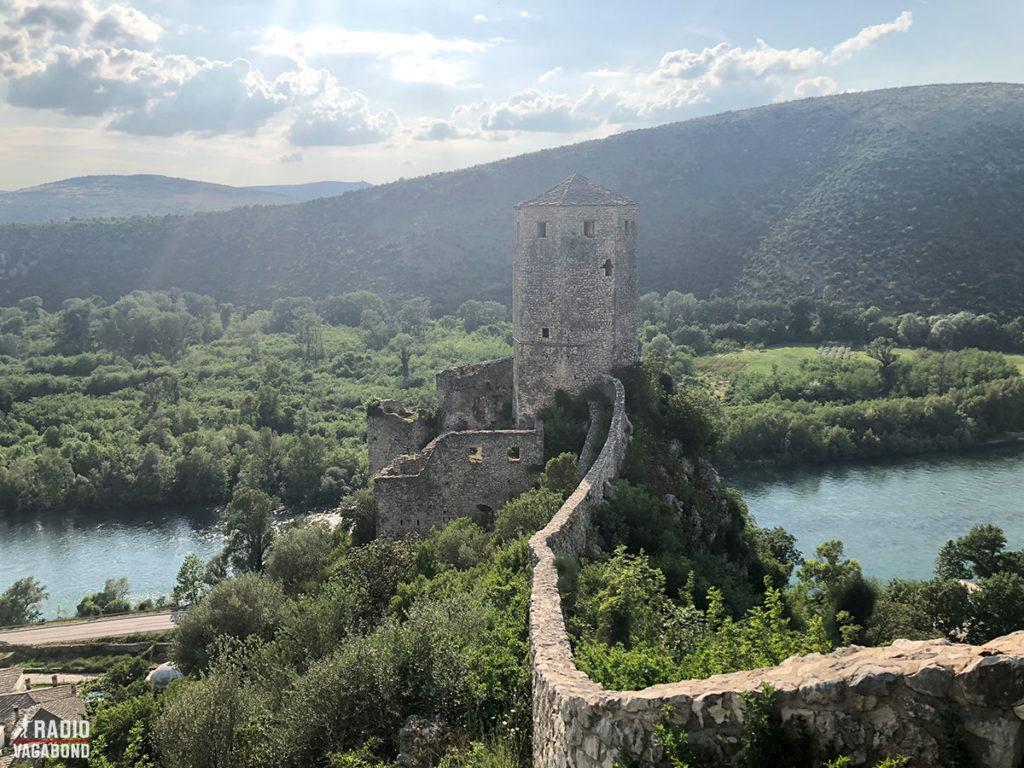
In the middle ages, it was the administrative center and center of governance of the county, and its westernmost point, which gave it major strategic importance. It is supposed that the fortified walled town was built in 1383 and well worth a visit.
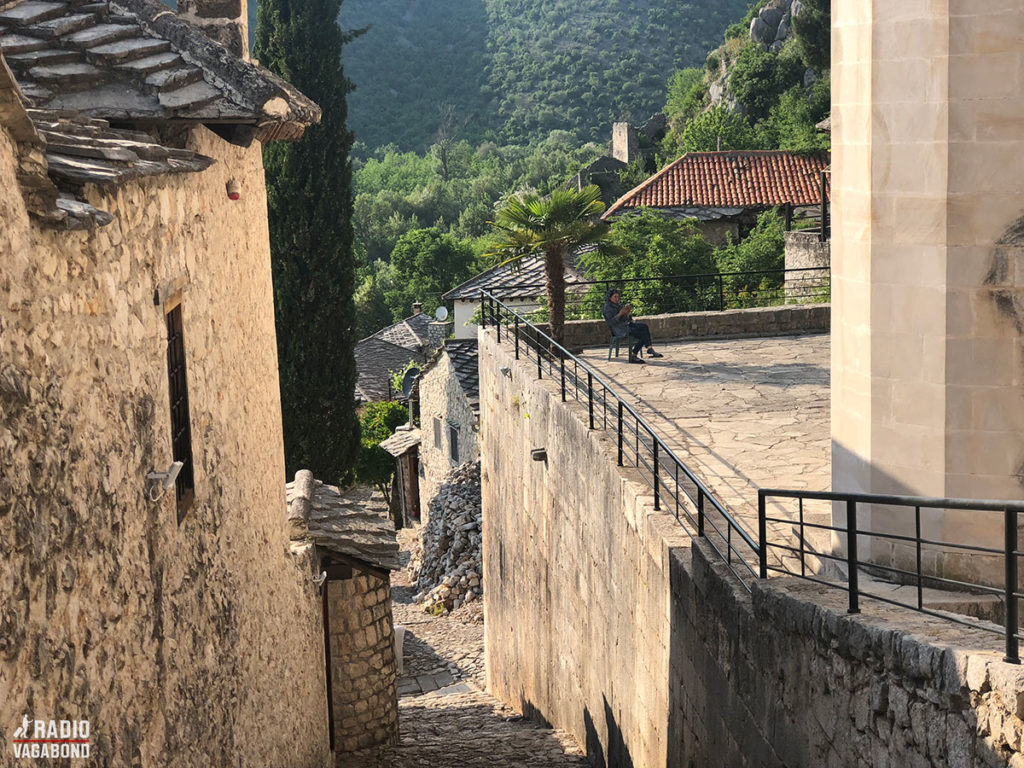
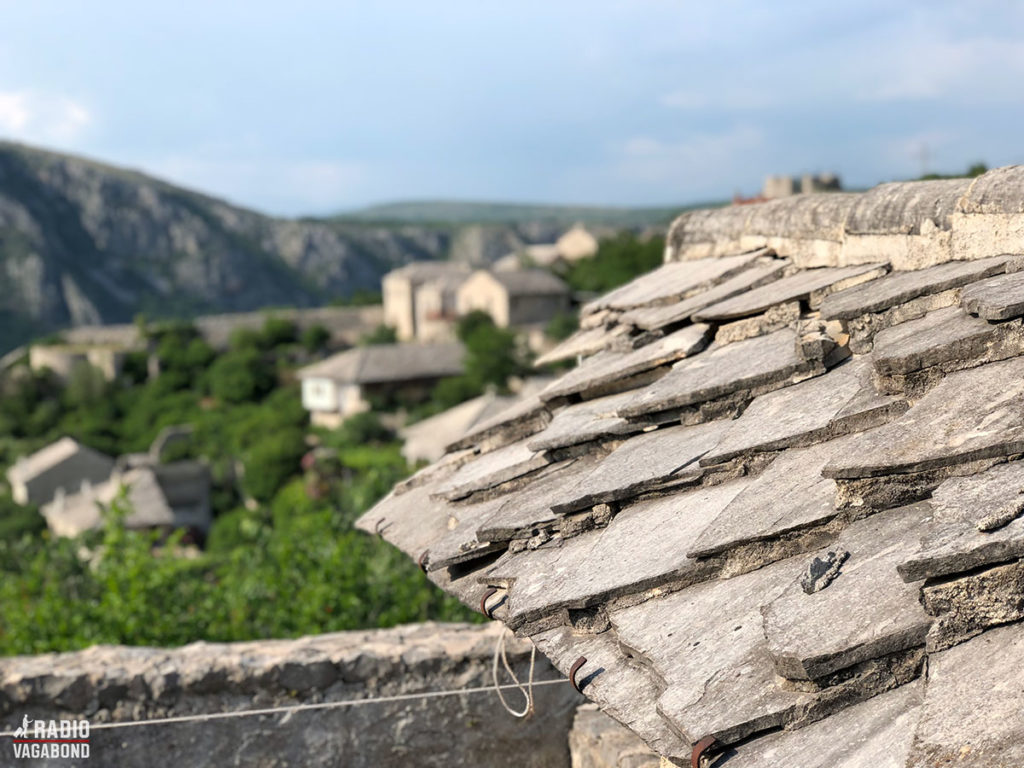
BRUCE LEE STATUE IN MOSTAR
For some reason here in Mostar there’s a statue of kong-fu expert Bruce Lee. The statue was the first public monument to Bruce Lee anywhere in the world and was unveiled in November 2005.
Why you may ask: The idea came from a youth group called Mostar Urban Movement, and they saw the statue as “a symbol of “loyalty, skill, friendship and justice.”
In a city that had been torn in war by ethnic divisions, they see the dynamic movie star as a part of their idea of universal justice – that the good guys can win. They feel that Bruce Lee represented one thing that could bridge the divides between Mostar residents: “One thing we all have in common is Bruce Lee” they said.
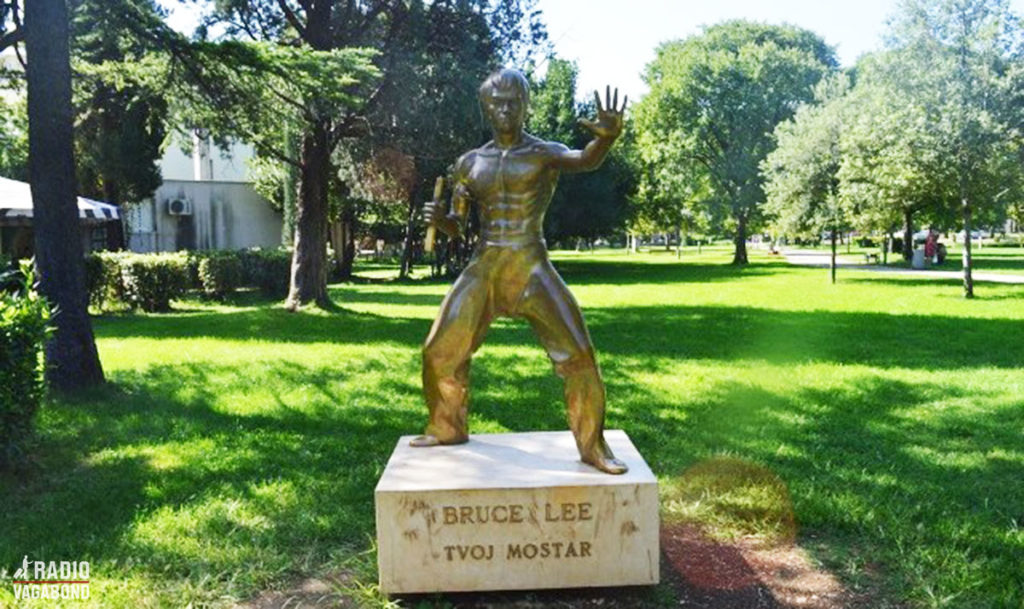
Shortly afterwards the sculpture was vandalized, removed for repairs and brought back at the end of May 2013. Both Bosnians and Croats had complained that the statue was a provocation because they thought it was pointed towards their area in a fighting stance, so its creators rotated the statue to face a neutral direction.
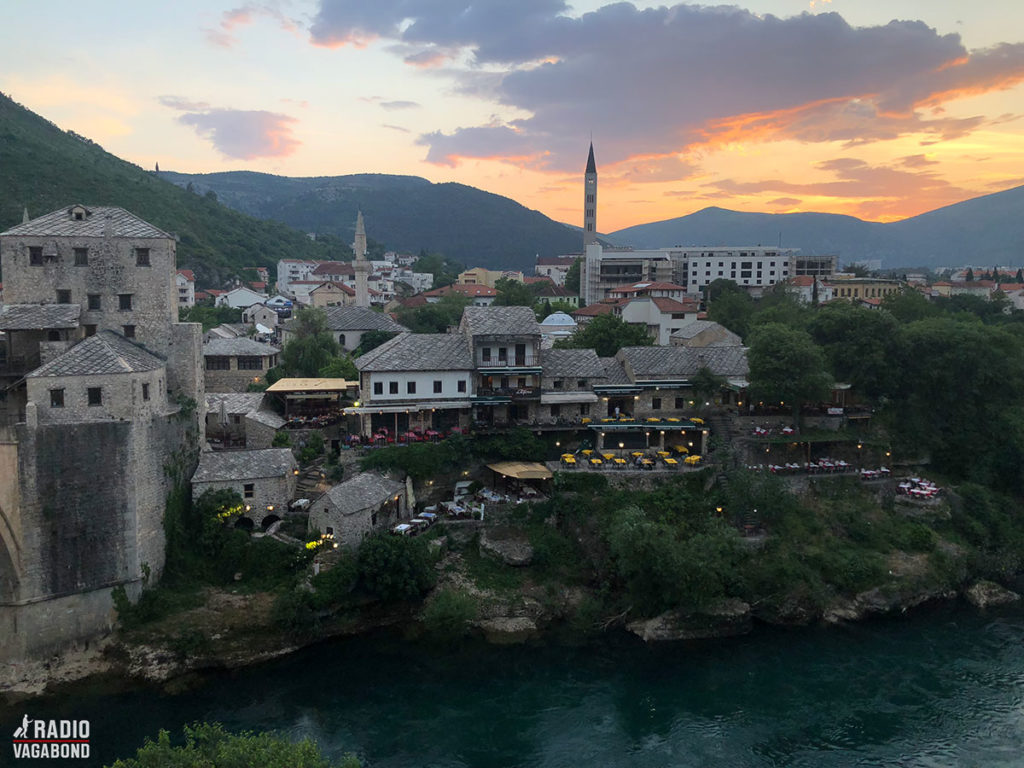
HIT THE ROAD JACK
Back in Mostar we go walk across the Old Bridge to the west side, for dinner and drinks at the iconic Black Dog Pub, and we all sing along to Hit the Road Jack.
And then it’s time for me to hit the road myself, and my next stop is Croatia.
My name is Palle Bo and I gotta keep moving.
I WANT TO HEAR FROM YOU!
I really would like to hear from you. Where are you and what are you doing as you listen to this episode? You can either send me an email on listener@theradiovagabond.com or go to TheRadioVagabond.com/Contact.
Or send me a voice message by clicking on the banner.
Either way, I would love to hear from you. It’s so nice to know who’s on the other end of this.
SPONSOR
A special thank you to my sponsor, Hotels25.com, who always provide me with the best, most affordable accommodation wherever I am in the world.
